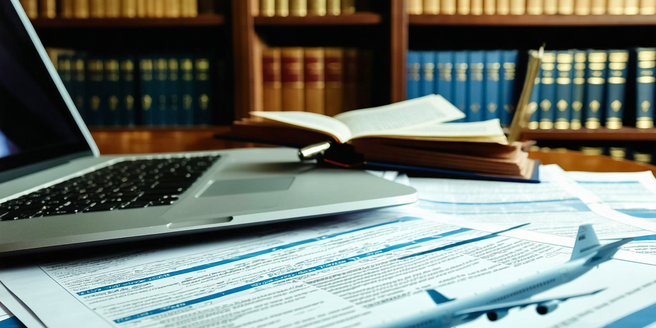
Understanding the Basics of Aviation Accident Claims
Aviation accident claims involve a complex field of law that requires specialized understanding of both aviation operations and personal injury law. It is essential to discern the types of accidents, which can range from commercial airline disasters to private plane incidents. Key to initiating a claim is the understanding of the statutes of limitation, which can vary by jurisdiction and impact the ability to pursue reimbursement. Familiarity with international treaties such as the Montreal Convention, which governs liability in international air travel, is also crucial. Individuals affected by aviation accidents should seek advice from legal experts specializing in this niche, as they will navigate the intricacies of aviation law, ensuring that all procedural requirements are met, and the rights to fair compensation are protected.
Key Factors in Establishing Liability
Determining liability in aviation accident claims involves multiple factors that can complicate the process significantly. Key elements include establishing aircraft maintenance records, assessing pilot training and competence, understanding manufacturer design or production defects, and even scrutinizing air traffic control communications. Often, multiple parties may hold shared responsibility, involving airlines, manufacturers, maintenance companies, and individuals. The process may require nuanced interpretation of aviation law and adherence to international safety standards. Legal counsel must gather substantial evidence, compile witness testimonies, and consult expert opinions to construct a solid case. Understanding and applying these factors correctly can be the difference between proving negligence and having the claim dismissed.
Common Challenges Faced in Aviation Claims
Aviation claims can present unique challenges that deviate from other types of personal injury or liability cases. One primary obstacle is the cross-jurisdictional nature of many aviation accidents, which involves navigating different legal systems and treaties. The technical complexities involved in establishing causation often require detailed investigation, where evidence like black box data or flight simulations might be crucial. Insurance companies of aviation firms might push back vigorously, employing experienced legal teams to mitigate their liability, thus prolonging the claims process. Furthermore, gathering accurate eyewitness accounts or expert testimonies may also present difficulties, particularly if significant time has passed since the incident. Overcoming these hurdles necessitates the strategic acumen of specialized lawyers.
The Role of Aviation Accident Investigations
Aviation accident investigations are pivotal in understanding the causes of an incident and preventing future occurrences. These investigations are conducted by official bodies like the National Transportation Safety Board (NTSB) or the International Civil Aviation Organization (ICAO), depending on the jurisdiction. The process includes examining aircraft wreckage, analyzing flight data recorders, and evaluating air traffic control communications. Investigators look into multiple factors, from human errors and mechanical failures to weather conditions. The outcome of these investigations often provides critical evidence in legal proceedings and can influence the direction of claims substantially. For plaintiffs, having access to official investigative reports can support liability arguments and aid in seeking just compensation.
Evaluating Compensation in Aviation Incidents
Evaluating compensation in aviation incidents involves a comprehensive assessment of both economic and non-economic damages suffered by the victims or their families. Economic damages may include medical expenses, loss of earnings, and rehabilitation costs. Non-economic damages cover pain and suffering, emotional distress, and loss of companionship. In cases of fatalities, compensation might extend to funeral costs and loss of future income support. The calculation of adequate compensation requires expert analysis, often involving forensic accountants and economic experts to project lifetime losses. Legal representation plays a critical role in ensuring all possible damages are considered, negotiating with insurance providers, and advocating for a settlement that reflects the severity and impact of the incident.
The Legal Process: From Filing to Resolution
The legal process for aviation accident claims commences with the filing of a claim, which needs to be within the statute of limitations. Initial investigations and the gathering of evidence follow, where legal counsel reviews investigative reports, collects witness statements, and consults aviation experts. After enough evidence has been gathered, legal teams often engage in negotiations with the defendants and their insurers to reach a settlement. If negotiations fail, the case may proceed to court, where each party presents its arguments and evidence to a judge or jury. The resolution of aviation claims can be protracted, involving appeals and extensive legal maneuvering. Victims or their families need to remain informed and involved throughout the process to ensure their rights and interests are effectively represented.
